In your trip to Madrid, Plaza Mayor It will be one of the essential visits that will become the center of your tourist activities in the historic area of the city.
Very close to the Puerta del Sol, behind the main Street, In the Plaza Mayor You will find one of the most attractive corners of Madrid and, from my point of view, one of the most beautiful squares in all of Europe.
Therefore, it will not surprise you that the Plaza Mayor is always full of tourists who find a great atmosphere, where its always very busy terraces stand out.
All the information in detail
Curiosities about the history of the Plaza Mayor in Madrid
Now, you will find it curious to know that the now very central Plaza Mayor occupies the space that during the Medieval Madrid It grew at the gates of the wall, outside the city.
This space was originally occupied by a swampy area called the Luján Lagoons.
Over time, the so-called class of the suburb, with a popular market, right at the entrance of the wall of Madrid, and with the aim of avoiding the taxes that merchants had to pay within the city.
In fact, wall of medieval Madrid It extended along the west side of what is currently the street of the Cava de San Miguel, through the center of which ran a moat.
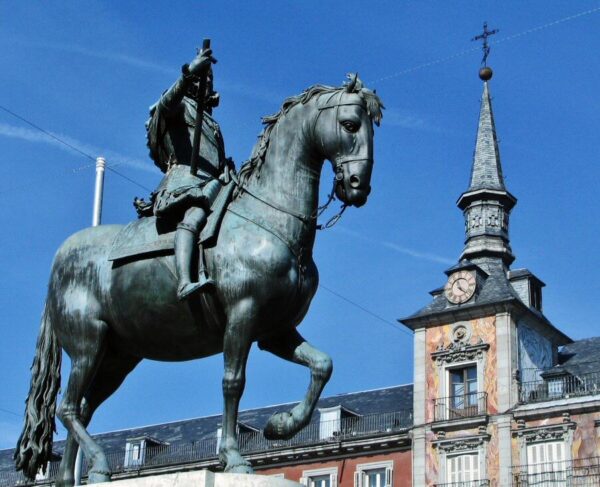
In the time of the Catholic kings The settlement of the stores has already been regulated. suburb square, but finally the King Philip III commissioned the construction of a new plaza to replace the disorderly one in the Suburb.
The new plaza was built in just two years by a disciple of the architect Juan de Herrera, ending in year 1619 .
On the north side, the building of the Bakery House, on the ground floor of which bread was sold, and the upper floors were converted into royal apartments.
Opposite, on the south side of the plaza, another similar building known as the House of the Butcher.
Subsequently, the Plaza Mayor suffered several fires, like what happened in 1672 that also affected the Bakery House.
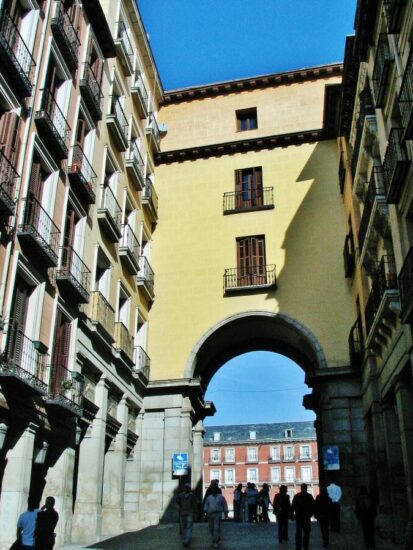
Since its construction, the Plaza Mayor of Madrid became a place where Austrian Court He had numerous celebrations.
In this way, apart from big parties, the Plaza Mayor housed since bull throwing, which could concentrate up to 50.000 people, until executions of prisoners.
After reform of 1853, coinciding with the construction of the nearby Plaza de la Puerta del Sol, the Plaza Mayor became a garden place where trams circulated.
In the center of the square was placed the equestrian statue of Philip III, which until then was located in the Casa de Campo.
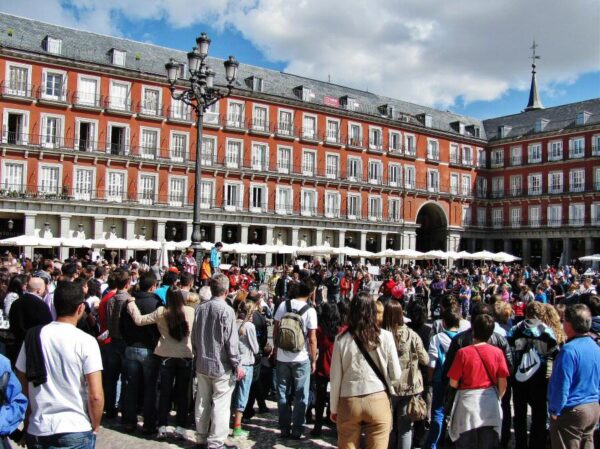
What to see in the Plaza Mayor of Madrid
Nowadays, when you get to the Plaza Mayor of Madrid You will find a large pedestrian space, in whose place the aforementioned stature is still located, and which in summer is largely occupied by the terraces of the bars.
Most of the buildings today are private apartments, so it is still possible to rent one of them to live in the same Plaza Mayor.
It is the place where the most important Christmas market in Madrid and the heart of the city is held.
And although it may seem like a simple square, there are several places to pay attention to.
Casa de la Panadería, the colorful facade of the Plaza Mayor in Madrid

The most significant building in the center Plaza Mayor de Madrid is known as Bakery House.
ORGANIZE your TRIP
- Don't forget your TRAVEL INSURANCE with a 5% discount
- Book the HOTEL for your trip
- RENT a CAR for your trip
- The best TOURS and EXCURSIONS in Spanish
- NO-LINE TICKETS for museums and monuments
- Best FREE TOURS around the world
- Book your TRANSFER from the airport
- eSIM card with INTERNET at the best price
It will be very easy for you to recognize it, because in the uniform building that surrounds the square, the Bakery House It occupies the north side and shows us a façade colored with paintings that represent mythological images.
La Bakery House was built in 1590, a few years before the Main Square.
The new building, which I am going to tell you about historical curiosities, came to occupy the place of another previous porticoed building.
History of the Bakery House
This served as the trading hall of the market that had been established in that area outside the wall of the small medieval town of Madrid.
And do you know what the name comes from? Bakery House?
As you can imagine, this is because bakeries were located on the ground floor of the original building, while the upper floors were reserved for royal apartments.
When in 1617. construction began on the Plaza Mayor, following the architect's guidelines Francisco de Mora, Bakery House It was integrated into the project, and undoubtedly conditioned the style of the new buildings.
The original four-story building, with a porticoed ground floor and two towers in its corners, was destroyed by a fire in 1672, so it had to be completely rebuilt.
Subsequently the Bakery House It had new renovations, the most important in 1888.
During the 18th and 19th centuries the Bakery House It was at different times the headquarters of the Royal Academy of Fine Arts of San Fernando and the Royal Academy of History.
Already at the end of the 19th century it became dependent on the Madrid City Council, becoming its second most important headquarters.
Paintings in the Bakery House
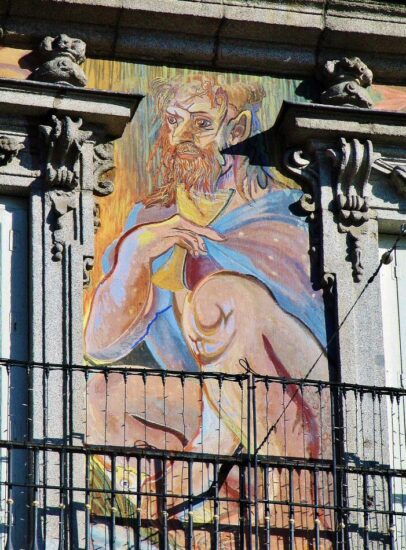
The last major remodeling affected precisely what will catch your attention the most when you are in front of the Bakery House: The facade paintings.
These had already been restored on successive occasions, since the frescoes painted in 1672 Claudio Coello y José Jiménez Donoso.
In 1988, The Madrid City Council decided restore the deteriorated Fresh that Bakery House had then, which dated back to 1914, made by the painter Enrique Guijo.
A project by the painter was finally approved Carlos Francos, which was completed in 1992, whose paintings show us different mythological characters, as we can currently see in the Casa de la Panadería.
La Bakery House of the Plaza Mayor is currently the seat of the Madrid Tourist Board.
On the ground floor of the building you will find the Tourist Office, with all the tourist information to visit Madrid and the starting point of the official guided tours of the City Councils from Madrid.
Felipe III Statue in Plaza Mayor
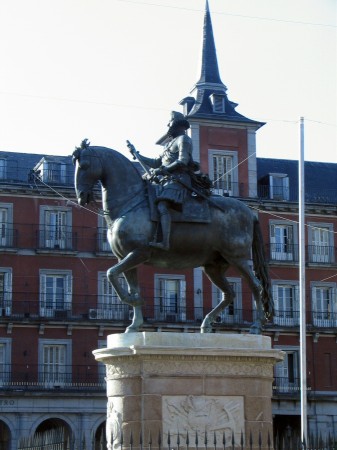
When you visit the Plaza Mayor of Madrid, you will see that it is a pedestrian plaza, completely open...except for the presence in the center of it of a large equestrian statue.
Is Philip III, the king who in 1619 commissioned the construction of the square as we can see it today.
Don't forget your Travel Insurance
Are you organizing your trip or getaway? Don't leave without take out your travel insurance before, and here we explain why. If you hire it with us, you have a 5% discount
Philip III was the son of Felipe II, and during his reign the imperial hegemony of the Kingdom of Spain.
La equestrian statue was designed and cast in Florence in the year 1614 by John of Bologna, although he finished it Pietro tacca.
Made of bronze, it was initially installed in the Casa de Campo in Madrid.
Finally it was in 1848 when, after a remodeling of the Plaza Mayor, the statue was installed in its current location on a large stone pedestal. Of course, with the arrival of the republican regimes in 1873 and 1931, the statue was temporarily removed from the Plaza Mayor.
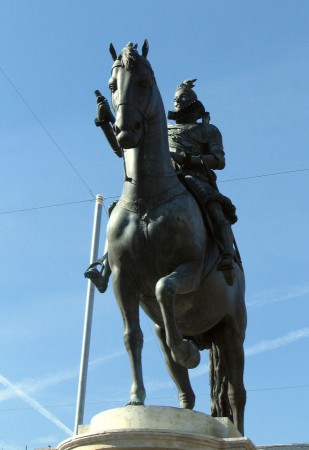
An inscription on the pedestal of the statue reminds us that Philip III In 1619 he commissioned the construction of the Plaza Mayor de Madrid.
It should be noted that, later, his successor, his son the king Philip IV, wanted to have one equestrian statue more majestic than his father's. For this reason he commissioned his own statue, which is considered the most important in the city of Madrid, which you can see in the center of the nearby Plaza de Oriente.
Knife Bow
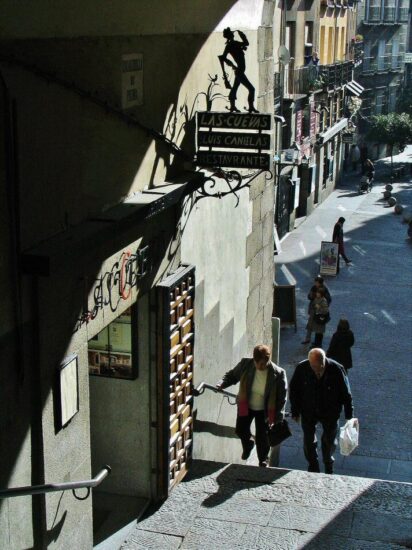
One of the most outstanding corners that you will see in your visit of the Plaza Mayor de Madrid is Knife Bow.
This is one of the porticoed exits that this large square in Madrid has, which you find in its southwest corner and leads you to one of the bars and tapas areas busiest for tourists, such as the Cava Baja.
El Cuchillero Bows connects the Plaza Mayor with the Cuchilleros street, extension of the Cava de San Miguel.
History Arco Cuchilleros
El Knife Bow It was built after the reform that the architect Juan de Villanueva did in the Plaza Mayor in 1790, which meant the complete closure of the square with buildings.
When from inside the square you reach the Knife Bow, you will be surprised by the long staircase that leads down to the Cuchilleros street.
But it is when you reach this street and turn to see the porticoed arch, that you discover the great height of the building, with its six floors.
This height is the most significant exponent of the unevenness that had to be overcome when the Plaza Mayor of Madrid.
In front of the porticoed arches that emerge from its east side, which open at the same level of the street, the Knife Bow must bridge the great gap that exists with the Cuchilleros street.
El Knife Bow It is also famous for housing one of the most traditional restaurants and tapas bars in Madrid, known as The Caves of Luis Candelas.
Book your hotel, 15% discount, free cancellation
When planning your trip, we advise you to, well in advance, Book your hotel now on booking.com where you can find discounts from 15% and you will have a possible cancellation for free
Centenary shops in Plaza Mayor
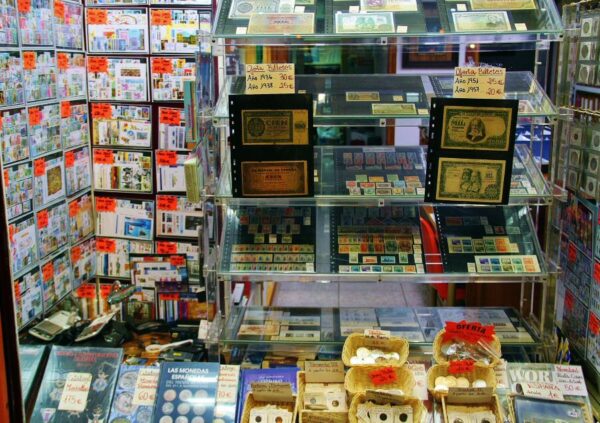
Under the arcades there are still numerous traditional and centuries-old shops.
Specifically, on the west side of the square, under the arcades, the different shops that exist still maintain their facades with the characteristic style of 19th century establishments.
Of course, on this side of the square the premises are currently occupied by convenience stores. remembrances which in a certain way maintain the traditional structure of its façade, as well as some bars.
To find a traditional shop whose origins really come from the 25th century, you should go to number XNUMX of the Plaza Mayor, on the northwest side of it, where you will find the “La Favorita” Hat Shop.
This establishment is one of the few that still remain in Madrid where hats are sold.
Prior to opening the business of "The favourite", In 1894, in the same location in the Plaza Mayor there was another business selling hats.
The store manager at that time, Teodoro Enguita, he bought it from its owner, and until today, the “La Favorita” Hat Shop It has been managed by his descendants, who now sell hats, caps and berets also through their online business.
Other traditional shops characteristic of the Plaza Mayor are the philately and numismatic stores dedicated to sale of stamps and coins, of which some establishments are still open.
In the surroundings of the Plaza Mayor you also find century-old restaurants, such as the loot house considered the oldest in the world, or Los Galayos, with a long literary tradition.
Squid sandwiches
Reserve your RENTAL CAR now for your trip
Looking ahead to your trip, book your rental car now on this website that offers you the best price guaranteed and allows you a possible free cancellation in most cases. Here you have more information with tips for renting a car
And the bars where they sell are also traditional in this Madrid square and its surroundings. calamari sandwiches.
In these bars, at certain times, customers crowd to consume this type of hot sandwich by filling the bread with freshly fried squid, which is perfectly accompanied with a beer.
El price of squid sandwiches It usually ranges from 3,50 to 5 euros, depending on the establishment, which even compete by advertising the most attractive price in their windows.
In this way, for around 5 euros you can take the squid sandwich along with beer.


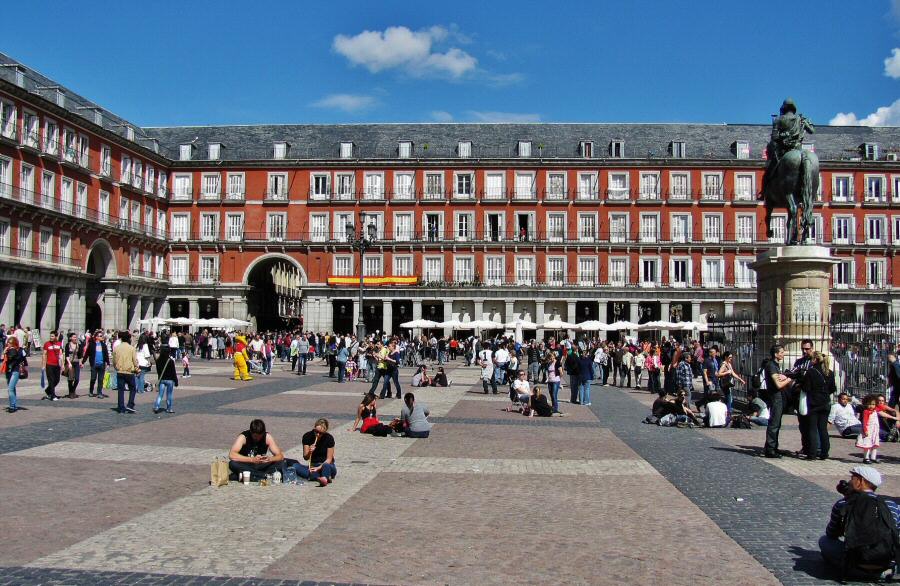
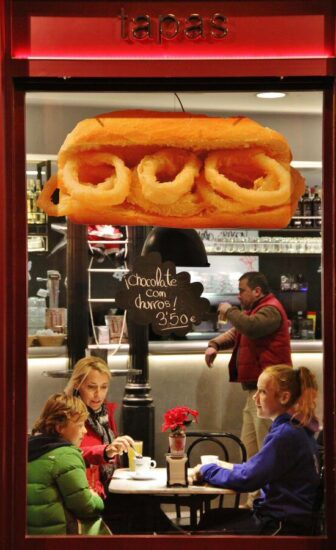
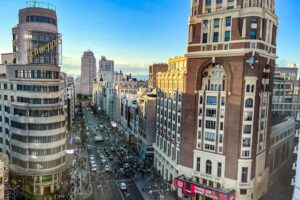
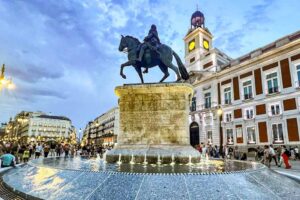
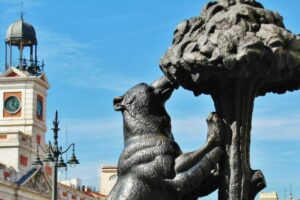











Comment